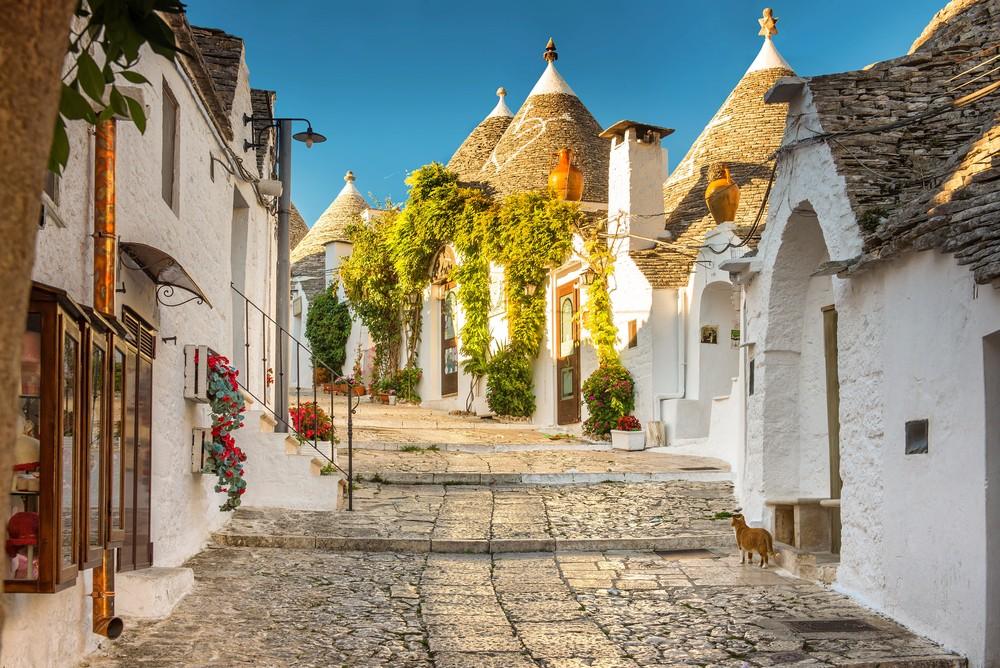The lovely town of Alberobello is located in the middle of the Valle d’Itra. Characteristic of this valley are its many hills on which olive trees, almond trees and oaks grow AND the trulli houses. Alberobello can be described as the “trulli capital”. Because there are more than 1400 of these remarkable houses here.
Alberobello was founded in the 15th century. At that time, the founding father, Count Giulio di Acquaviva, gave the place the name “Sylva Arboris Belli” – which meant “forest of the war tree”. He had part of the large oak forest cleared by his farmers so that the settlement could be built. Gradually, it became the name “Alberobello”. Today, the city is a UNESCO World Heritage Site .
You can gut the trulli from afar. These small whitewashed stone houses with conical roofs crowd close together in the centre. Characteristic is its dry construction, which does not use mortar. The houses were built from the limestone found in the region, which was also used by the farmers to build walls.
The centre of Alberobello is divided into two areas. People live and work in the somewhat quieter “Rione Aia Piccola” district, which is located north of the “Largo Martellotta” square. The southern district of “Rione Monti” has about 1000 houses and is completely dedicated to tourism. Visitors can stroll up the narrow streets and get an insight into the inner workings of the houses. One souvenir trullo follows the next. Nevertheless, a visit to the district should not be missed on any visit to Puglia .
Particularly noteworthy buildings from the trulli tradition are the “Chiesa di Sant’Antonio”, which dates back to the 1920s, and the “Trullo Sovrano”. The latter is located in Piazza Sacramento and can be visited daily. It is the largest trullo in Alberobello and was built in the 18th century for the family of a priest.
In the “Museo del Territorio” in the Casa Pezzolla, the history of the valley and the trulli is discussed and illustrated. The museum consists of 15 trulli houses and a more modern building. The information material is very extensive and is also available in German.
Können wir Ihnen helfen?
Benötigen Sie Unterstützung bei Ihrer Reiseplanung oder weitergehende Informationen zu einzelnen Reisezielen? Wir freuen uns über Ihre Kontaktaufnahme.


